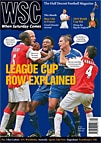 Scunthorpe’s promotion from the last regional Third Division. By Geoff Wallis
Scunthorpe’s promotion from the last regional Third Division. By Geoff Wallis
The long-term significance
This season sounded the death knell of the two regional divisions that had occupied the third tier of English league football since the early 1920s. The top division of the Southern League had been absorbed into the Football League as the Third Division for the 1920-21 season, adding the suffix (South) when its northern counterpart, drawn from a variety of minor leagues, was formed a year later. Only one team from each Third Division was promoted each season, while the bottom club in both sections had to apply for re-election. For 1958-59 the two regional sections were merged, with the top and bottom halves forming new Third and Fourth Divisions respectively, thus introducing the delights of Tyneside to Torquay United fans and the hotspots of Colchester to their Bury counterparts.